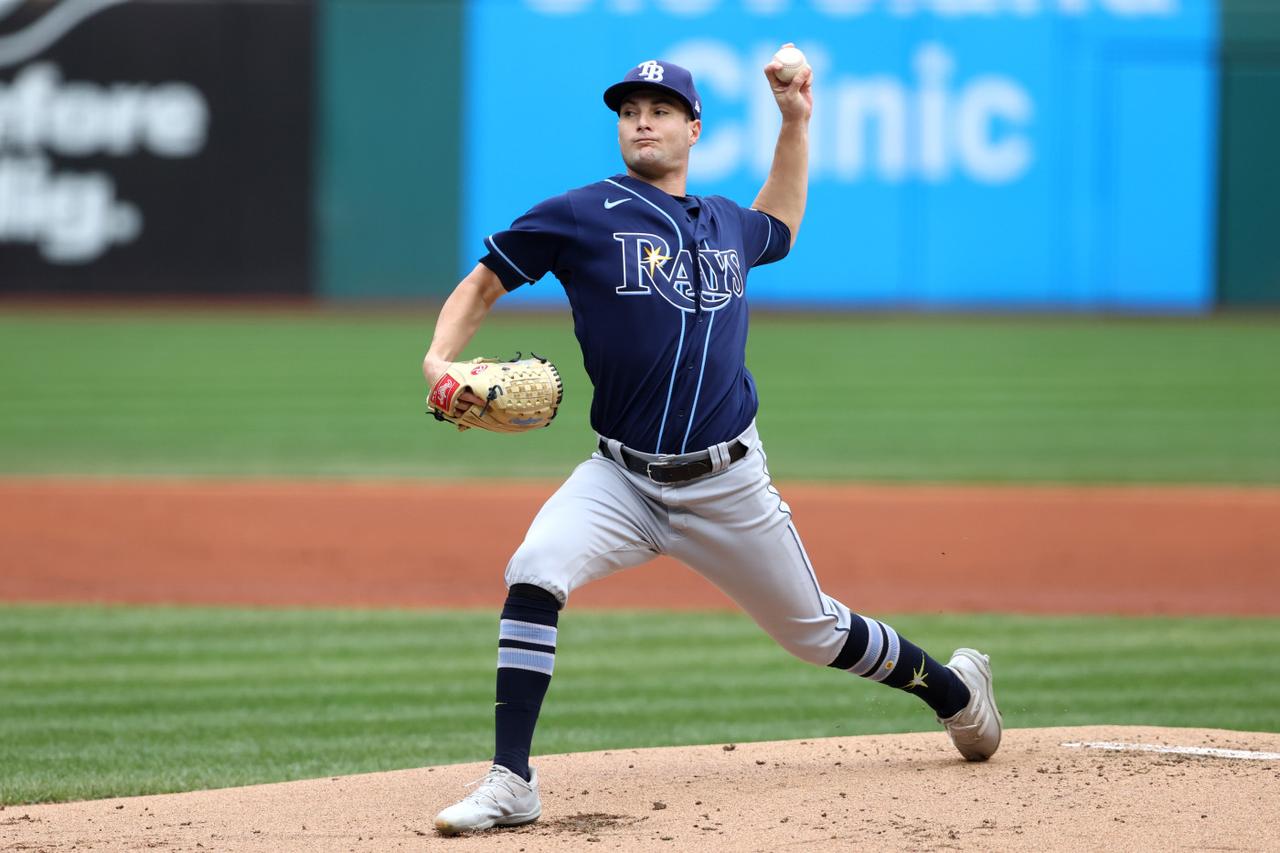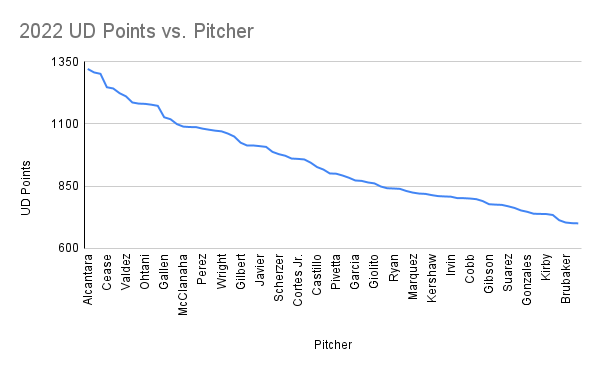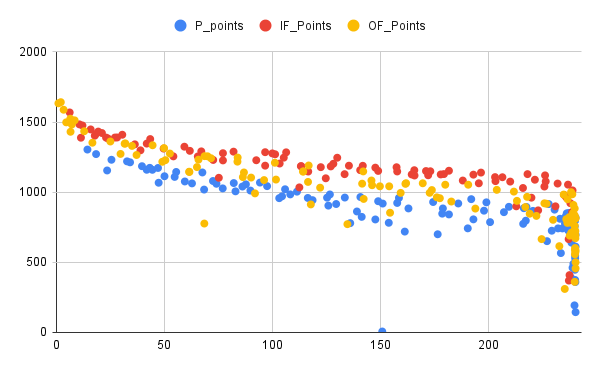Tuma: Aces Are Undervalued on Underdog Fantasy

It makes sense to take a hitter first.
Particularly with how scarce outfield is, I almost always want to start my draft with a premium outfielder. After that, starting pitchers should be in play. Thus far in, "The Bullpen", that hasn't been the case.
Of the first 60 picks in Underdog drafts, just 15 are pitchers according to the latest ADP data. Gerrit Cole's ADP is 16.7 as the SP1. Sandy Alcantara is going at the end of Round 2 as the SP3. Justin Verlander is lasting until the middle or end of Round 4!
Since top-12 starters are lasting through the first four rounds of drafts, they should be particularly sought after. Not only are they each a value at current cost, but securing reliable arms early means not needing to invest when the position falls off a cliff in the later rounds.
Let's talk about why. As always don't hesitate to reach out on Twitter anytime with thoughts and/or questions, @toomuchtuma.
We'll start with the case for taking aces at their current ADPs.
By plugging Underdog scoring into a projection system, you'll find that hitters wind up totaling more points than pitchers. This is part of the case for taking an outfielder in Round 1 -- sheer points.
However, those projections are done on a season-long basis, and Underdog scoring happens on a weekly basis. Logging a dominant start, or 2 if your ace pitches early in the week, (or 3 if it comes during UD's 2-week playoff rounds), can severely tip the scales.
Note: Follow @b3isbol on Twitter who has many threads and spreadsheets explaining some similar game theories!
The secret has gotten out that elite outfielders are scarce on Underdog. However, we shouldn't overlook that aces are scarce in all fantasy formats.
Here's the number of 200 inning starters and 180 inning starters, at various years, going back to 2005:
2022: 8 had 200 IP, 27 had 180 IP
2021: 4 had 200 IP, 20 had 180 IP
2019: 15 had 200 IP, 33 had 180 IP
2015: 28 had 200 IP, 56 had 180 IP
2010: 45 had 200 IP, 73 had 180 IP
2005: 50 had 200 IP, 75 had 180 IP
Compared to hitters, starting pitchers already have such limited opportunities to pile up big point totals. Now that the best ones are throwing less and less as the years go on, capitalizing on volume is almost as important as the quality of that volume.
When you combine the two, volume and quality, you get a difference-making player with UD's scoring.
Here is what the drop-off in starting pitcher production looked like on Underdog in 2022:

Steep!
Underdog teams need big pitching performances to win tournaments, and the number of players who can deliver those performances is shrinking. This is similar to selling out for running backs in fantasy football. RBs are more fragile than other positions, but we still take shots at the best ones early in drafts.
The same should be true for starting pitchers on Underdog. There's no in-season waivers or trades. Identifying in-season pitching breakouts is a workable strategy in managed-leagues, but we only get one shot at drafting enough quality starters in Best Ball.
Of the top 20 starting pitchers in 2022 Underdog scoring, 15 of them were taken within the first 8 rounds.
Identifying SP breakouts before the season, particularly ones that provide the necessary volume to make a season-long difference, is extremely difficult. Strong ratios can be mined in the later rounds of drafts of managed leagues and the waiver wire is always filled with streamers, prospects, and in-season breakouts.
In a managed league, I'm comfortable rounding out my rotation with names such as Aaron Aashby, Roansy Contreras, and Brayan Bello. Either they hit early in the season or I drop them and find someone else. On Underdog, though, I wouldn't want to bank on them at all. What are the odds they pitch enough innings this season to still be a factor in September? What are the odds they consistently go deep enough into starts to qualify for wins and quality starts?
The 5 top-20 starters who were taken after Round 8 last year were Framber Valdez (admittedly undervalued), Zac Gallen (great pick), Triston McKenzie (great pick), Shane McClanahan (yessir!), and Martin Perez (undrafted).
In order to get one of the best starters in draft last year, you likely had to take him early.
Lastly, let's take a look at positional drop offs using Steamer's 2023 projections with UD scoring:

The gap between projected infielder points and projected outfielder points is why outfielders are being pushed up draft boards so aggressively.
But don't overlook the gap in starting pitcher points.
Anthony Santander has an ADP of 73.0 on Underdog right now. Going after him are Julio Urias, Joe Musgrove, and Zac Gallen. Cristian Javier is being drafted after Seiya Suzuki. Spencer Strider is going after Byron Buxton. Brandon Woodruff after Christian Yelich.
These are values! Get your 1-2 outfielders early, maybe another hitter, and then start taking advantage!
Even if you don't want to take an ace in Rounds 2-3, Max Scherzer (SP6) is currently available at pick 36.5 while Strider (SP12) can be had at the end of Round 4.
Investing in multiple aces early will create a fragile build, one that is more susceptible to bad injury luck, but there's upside with that strategy too.
If you draft 4 starting pitchers in the first 9 rounds, and they all stay healthy, you can create a super team since you won't need to rely on unlikely, late-round hits.
This is how you're going to have a significant advantage in August and September, the most important weeks for tournaments. On a weekly scoring basis, it could get very difficult for other teams to match monstrous SP outings (at least 2 of them and possibly 3 in UD's 2-week playoff system).
Not every team you draft needs to take this approach, but if you're entering The Bullpen multiple times, I'd want at least some exposure to SP-heavy builds.
Ultimately, if aces were being scooped up aggressively, especially in the first 3 rounds, then I wouldn't be making the case to lean into such a fragile draft approach. As it turns out, drafters aren't embracing enough risk at the moment. The limited number of SPs who make a difference, and when you have to take those players, leaves us with a sweet spot to take advantage of a draft inefficiency.